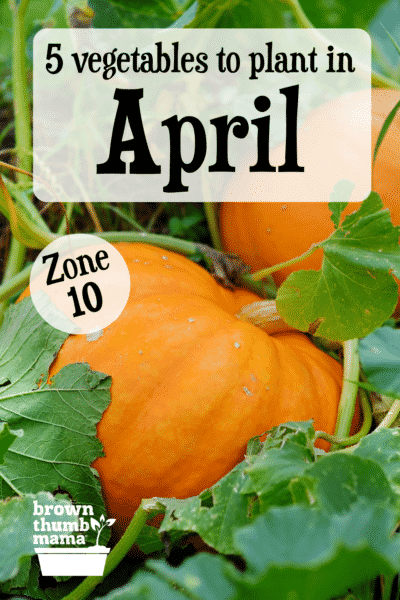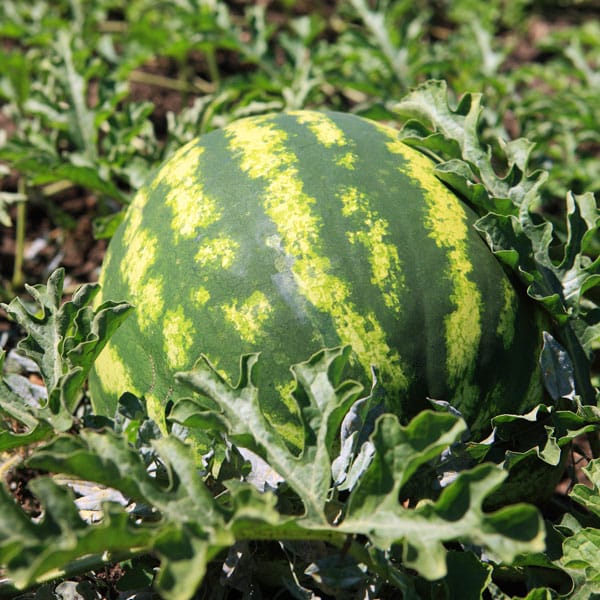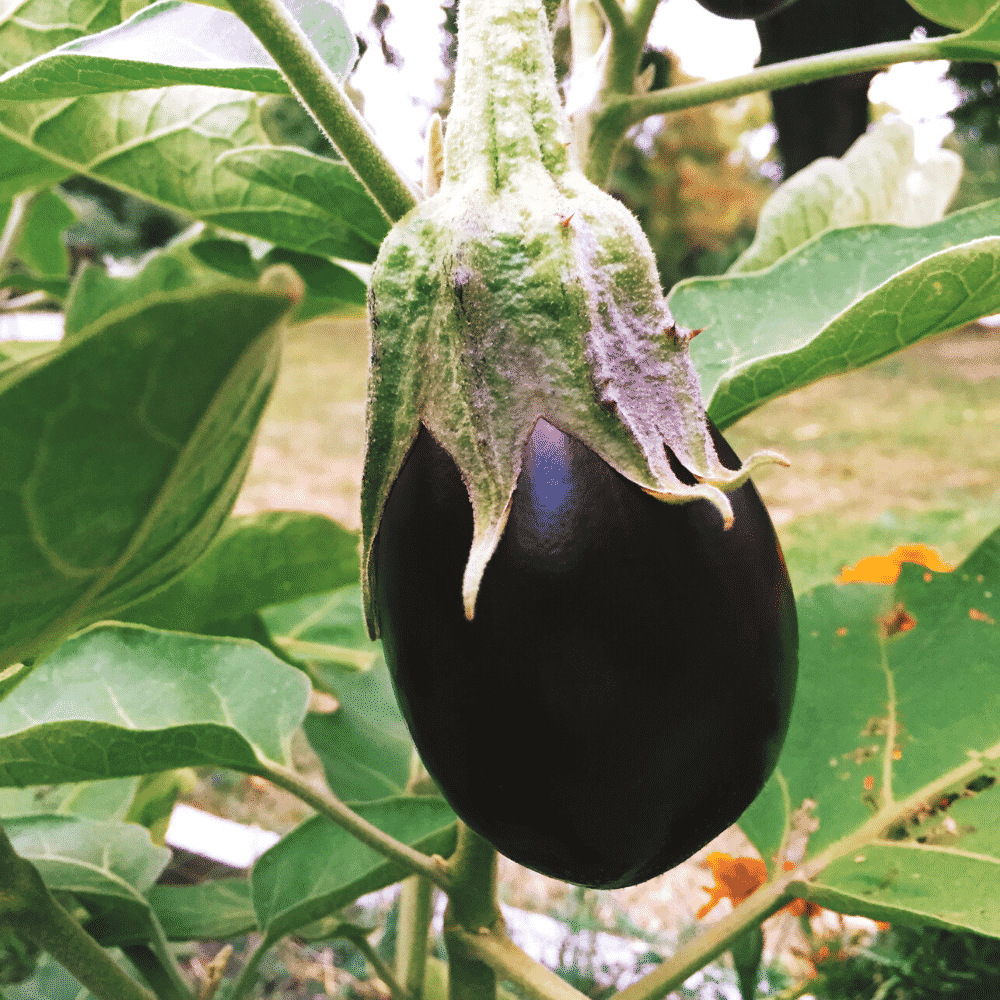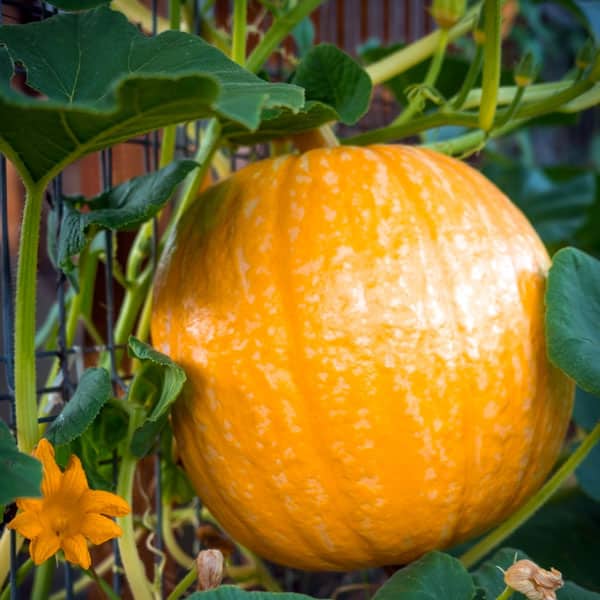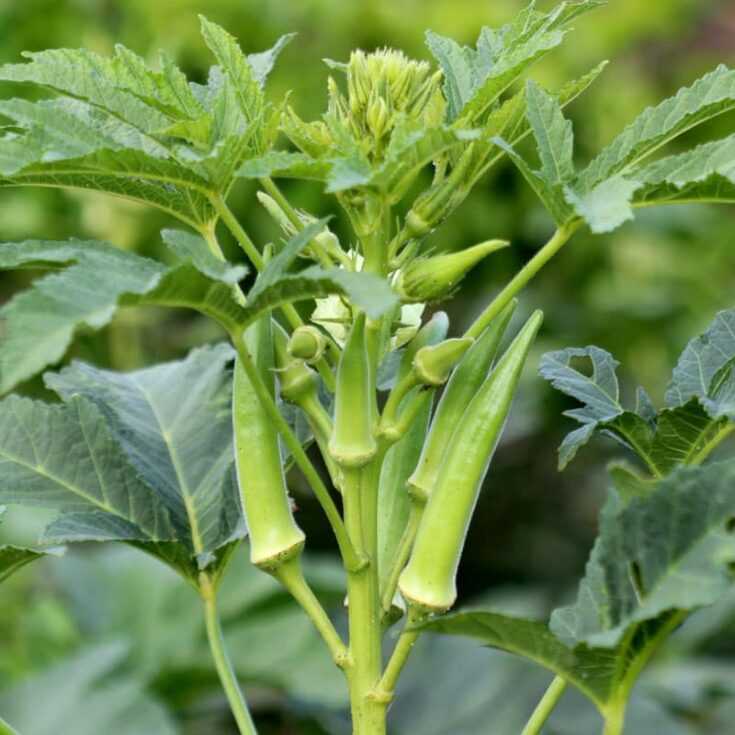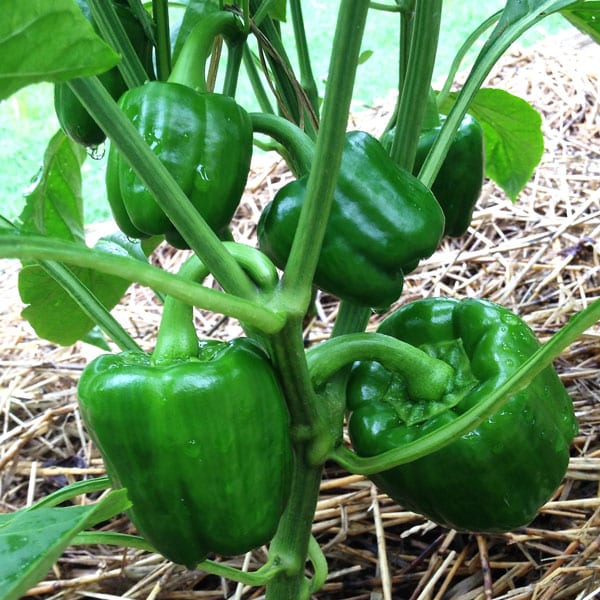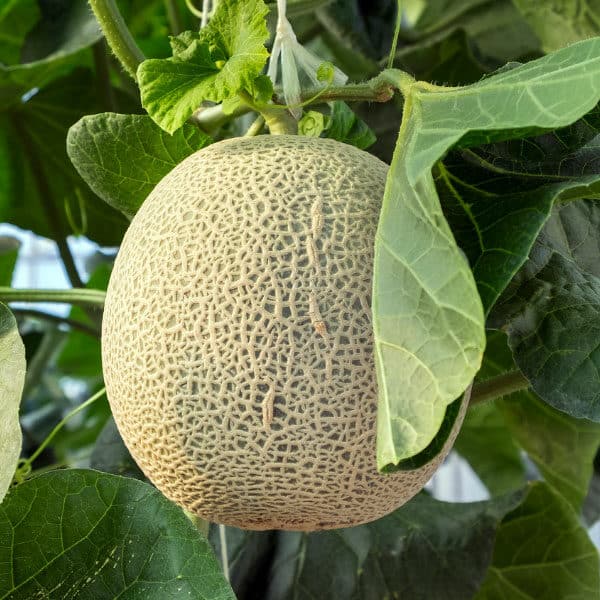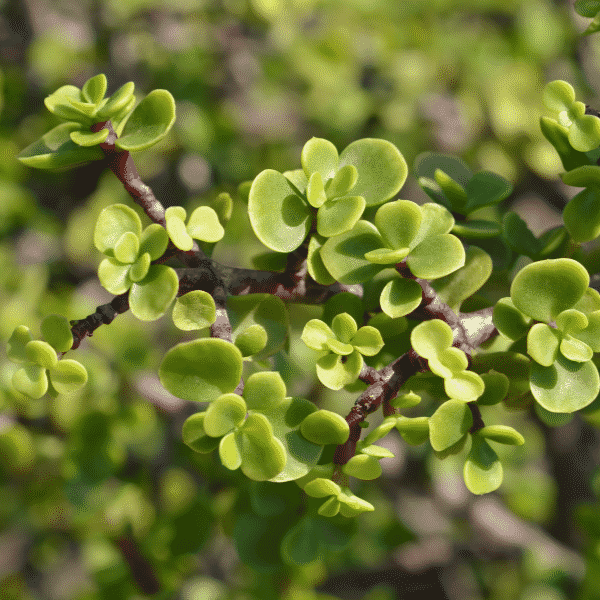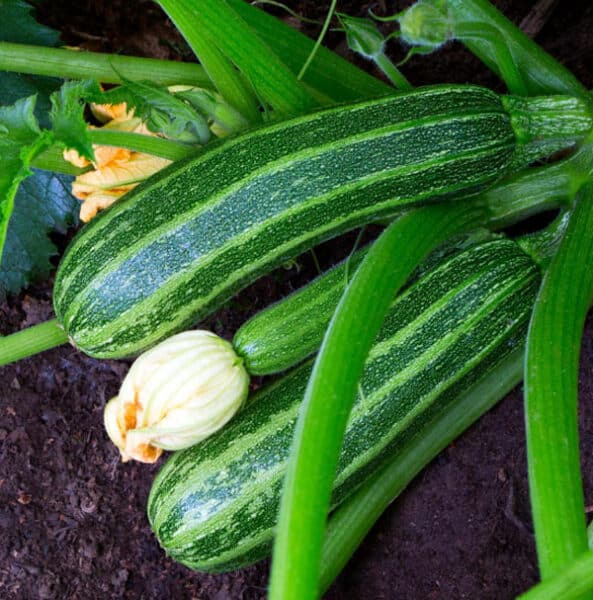This post may include affiliate links.
If you make a purchase, I'll earn a small fee at no extra cost to you.
It’s time to plant vegetables that love the heat. Here are 5 vegetables you can plant in April (Zone 10). Includes recommended varieties, planting tips, and recipes for your harvest.
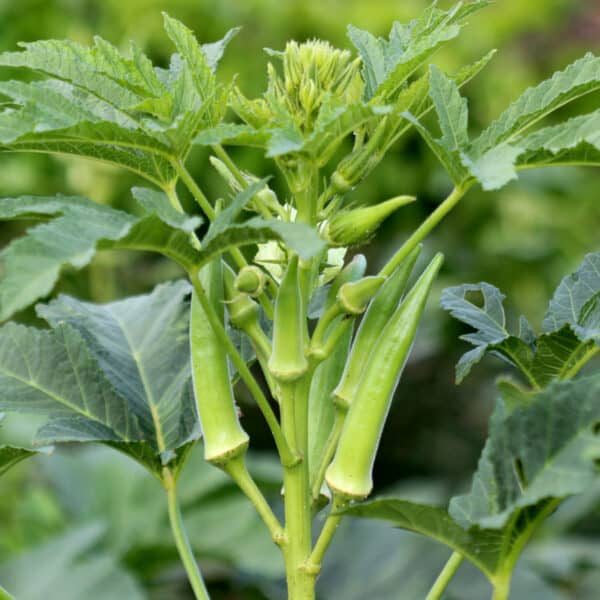
The rest of the country is finally warming up, but Zone 10 gardeners are well into the hot, sunny Summer. The vegetables to plant this month need to be able to handle the heat, and these 5 are perfect.
Are you a brand new gardener? Not sure what to plant or when to plant it? I can help.
You’ll find lots of great information in my new book, The First-Time Gardener: Container Food Gardening.
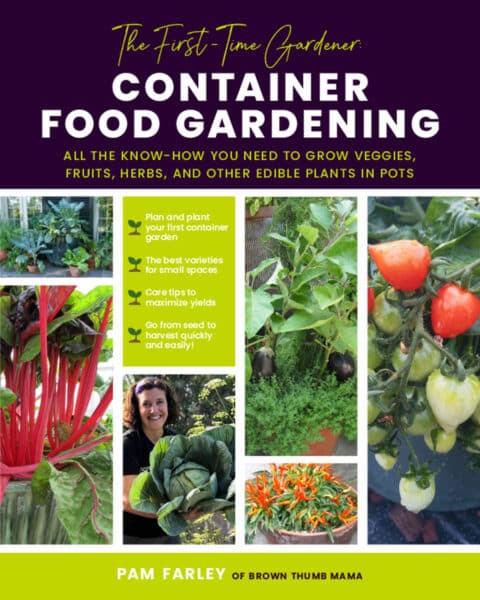
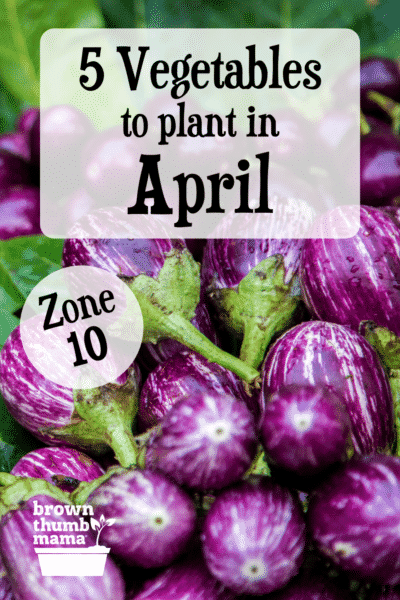
5 Vegetables to Plant in April {Zone 10}
Whether you’re growing watermelon, cantaloupe (also called muskmelon), honeydew, or other melons, you’ll be thrilled with their delicious flavor fresh from the garden. We grow several varieties of melon each year, and harvested a 21-pound watermelon a few years back!
Varieties: Ahhh, where to begin? We love cantaloupe, and Hale’s Best Jumbo cantaloupe is our favorite. The fruit is sweet and thick, with a small seed cavity. Cantaloupe grows on a vine, so you may want to support it with a trellis to save space.
Sweet Delight honeydew is delightfully true to its name. It produces large, sweet, and juicy melons.
Watermelon is a summertime favorite of ours. The kids love growing them and eating them, too. We like Sugar Baby watermelon because it’s small and fits in the fridge. For fun, plant Mountain Sweet Yellow watermelon because it has yellow flesh instead of pink.
Planting: Melons of all types like to be planted outdoors in warm soil. They’re heavy feeders, and appreciate soil that’s mixed with your homemade compost. Here are some tips on when to harvest your watermelon for the best, sweetest fruit.
Recipes: Try this crisp, refreshing watermelon limeade recipe on a hot, summer day. So good!
Eggplant (also called aubergine) is a veggie that likes hot weather, just like tomatoes and peppers. All three of these plants are part of the Nightshade family.
Varieties: Listada de Gandia is a beautiful French heirloom eggplant. Black Beauty is another favorite for its large size and thin skin that you don't have to peel.
Planting: Plant seedlings 18 inches apart--happy eggplants grow into bushes nearly 2 feet tall and 16 inches wide. Stake them shortly after planting, or the weight of the eggplants will cause the plant to fall over.
Recipe: Eggplant is delicious when sliced, brushed with olive oil, and grilled until just soft.
Pumpkins are easy to grow from seed, and there are many different types--teeny decorative pumpkins, white pumpkins, carving pumpkins, pumpkins for making pies, novelty pumpkins covered in warts...it’s hard to decide.
Varieties: I like to grow Howden pumpkins for making jack-o-lanterns, and Lumina, which are white pumpkins, to surprise the kids.
Planting: Pumpkins are easy to grow and need lots of space. Here are my tips on growing and planting pumpkins.
Recipe: Once you harvest your pumpkins, save the seeds and make Roasted Pumpkin Seeds.
Okra, like eggplant, is a vegetable that likes hot weather. It’s tough to start them from seed (they only have a 50% germination rate), so get seedlings from the garden center if you can.
Varieties: Clemson Spineless 80 is a reliable variety. It’s called “spineless” because okra plants have tiny hairs (spines) all over them that can cause an allergic reaction. You may want to wear gloves when harvesting them.
Planting: Okra plants can get big and bushy, so give them about 2 feet of space to spread out.
Recipe: There's more to okra than breading and frying. Sheet Pan Bhindi Masala is easy and delicious.
Peppers love hot summers, and there are so many fun varieties of both sweet peppers and hot peppers that you can try many different types every year.
Varieties: Oh my goodness...there are so many types of peppers to plant! I’ve started growing some in the front yard because we ran out of room in the backyard.
California Wonder is my favorite type of sweet pepper. They grow into a large, uniform shape that’s great for making stuffed peppers. When unripe, they’re green and when fully ripe, they turn red.
There are about a million types of hot pepper, and we like to try them all. The best way to do this is to get the Chile Pepper Collection from my friends at Botanical Interests. You’ll get an assortment that goes from really hot to scorching!
Planting: Whether you’re growing sweet peppers or hot peppers, April is the time to get those seedlings in the ground.
Recipes: We usually grow both hot and sweet types--if you end up with too many, you can freeze the bell peppers and dry the hot peppers for use later in the year.
Want to know what to plant every month?
Knowing which vegetables to plant in each growing season ensures your plants will thrive and give you a great harvest. Check out my Vegetable Garden Planting Schedules so you know exactly what to plant each month of the year.
